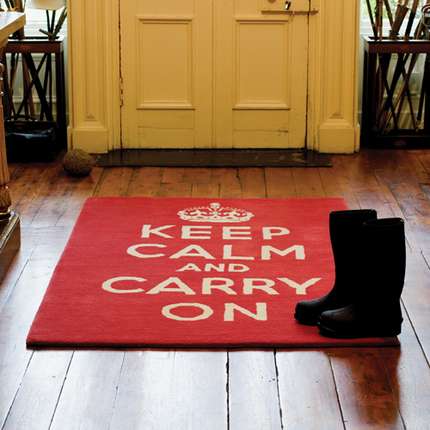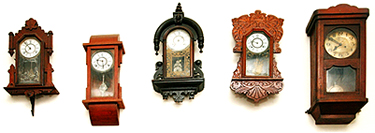 ...but not as if nothing happened!
...but not as if nothing happened!
Thursday, December 04, 2008
Social Sites, Laptops and Design Education
A row of empty studios greeted me.
It was as if the Christmas break had come early to my alma mater - the National Institute of Design (NID). The rows of studios were buzz of activity when I was a student there some dozen years ago. The open studios partitioned by plywood sheets of around 4 feet would be home to many throughout the day and often late into night.
Not any more, says Tarundeep Girdhar, my host and the co-ordinator of Graphic Design Studies at the NID. Remember the enlarger? A medieval device that would gobble us up as we entered its guts and tried to enlarge the drawings via a series of old-world reflections...
The studio was the hub of all activity - a place where we would draw, sketch, colour, cut, argue, review, critique. This was a place where revered (or hated) seniors would pass by, look over the partitions and offer insights, feedback and criticism. As would visiting faculty and the full timers. The drawing teacher could comment on logo design and vice-a-versa.
In the last week of November, I came to NID (after almost a decade) for the open juries - one of the evaluation method used to test students at the end of the semester. And by the end of day one, almost 9 hours of sitting through presentations - one thing was clear, there wasn't sufficient critiques happening on a weekly level. Context wasn't being clearly set for many of the theoretical briefs. Several student responses lacked the maturity or their very own perspectives that should reflect in the work of the particular year.
On day 2, it became evidently clear that far too many students were spending far too much time sitting in their rooms, glued to laptop screens, their interaction mediated by mobiles or sites like facebook. No wonder the studios were sparse. The revered, hated or even apathetic senior were missing as were wide-eyed wonder struck juniors. I had a chat with a group of students later that night, well past their dinner time. Most of the group seemed to agree with my observation - they were spending far little time in the studios chatting, arguing (and drawing/cuting and pasting in the real world in real time) and most importantly learning from each other and their peers. My furniture designer friends would have a point of view on the poster. Over cups of chai we would agree, or agree to disagree - and each would leave a little more enlightened (or corrected).
Real world interaction around a real printed or prototyped piece of work can not only help shape opinions and issues around the particular piece but also about design practice in a broader sense. Watching and participating in critiques is a surefire learning experience that stays well beyond the few hours that could be put in every week.
As I left Ahmedabad the following morning early, I couldn't help but think of all those who shaped my opinion about design - through examples of delightfully good, sheer bad and utterly ugly work. My classmates, the seniors, the many visitors who passed through and commented on work, the juniors and of course my teachers.
The challenge: how do we introduce the digitally connected generation to the real classroom and help them each find their own opinionated pathways through the richly layered world of design?
 Above: Student Yash Misra's visualisation of his social networks is a fascinating study into the multiple platforms via which students interact at NID.
Above: Student Yash Misra's visualisation of his social networks is a fascinating study into the multiple platforms via which students interact at NID.
A row of empty studios greeted me.
It was as if the Christmas break had come early to my alma mater - the National Institute of Design (NID). The rows of studios were buzz of activity when I was a student there some dozen years ago. The open studios partitioned by plywood sheets of around 4 feet would be home to many throughout the day and often late into night.
Not any more, says Tarundeep Girdhar, my host and the co-ordinator of Graphic Design Studies at the NID. Remember the enlarger? A medieval device that would gobble us up as we entered its guts and tried to enlarge the drawings via a series of old-world reflections...
The studio was the hub of all activity - a place where we would draw, sketch, colour, cut, argue, review, critique. This was a place where revered (or hated) seniors would pass by, look over the partitions and offer insights, feedback and criticism. As would visiting faculty and the full timers. The drawing teacher could comment on logo design and vice-a-versa.
In the last week of November, I came to NID (after almost a decade) for the open juries - one of the evaluation method used to test students at the end of the semester. And by the end of day one, almost 9 hours of sitting through presentations - one thing was clear, there wasn't sufficient critiques happening on a weekly level. Context wasn't being clearly set for many of the theoretical briefs. Several student responses lacked the maturity or their very own perspectives that should reflect in the work of the particular year.
On day 2, it became evidently clear that far too many students were spending far too much time sitting in their rooms, glued to laptop screens, their interaction mediated by mobiles or sites like facebook. No wonder the studios were sparse. The revered, hated or even apathetic senior were missing as were wide-eyed wonder struck juniors. I had a chat with a group of students later that night, well past their dinner time. Most of the group seemed to agree with my observation - they were spending far little time in the studios chatting, arguing (and drawing/cuting and pasting in the real world in real time) and most importantly learning from each other and their peers. My furniture designer friends would have a point of view on the poster. Over cups of chai we would agree, or agree to disagree - and each would leave a little more enlightened (or corrected).
Real world interaction around a real printed or prototyped piece of work can not only help shape opinions and issues around the particular piece but also about design practice in a broader sense. Watching and participating in critiques is a surefire learning experience that stays well beyond the few hours that could be put in every week.
As I left Ahmedabad the following morning early, I couldn't help but think of all those who shaped my opinion about design - through examples of delightfully good, sheer bad and utterly ugly work. My classmates, the seniors, the many visitors who passed through and commented on work, the juniors and of course my teachers.
The challenge: how do we introduce the digitally connected generation to the real classroom and help them each find their own opinionated pathways through the richly layered world of design?
 Above: Student Yash Misra's visualisation of his social networks is a fascinating study into the multiple platforms via which students interact at NID.
Above: Student Yash Misra's visualisation of his social networks is a fascinating study into the multiple platforms via which students interact at NID.
Monday, December 01, 2008
Every end is a beginning...
What better way to restart the blog then begin with the end. Not just 'the end' but multiple ends. A selection from Dill Pixels' magnificent collection...

What better way to restart the blog then begin with the end. Not just 'the end' but multiple ends. A selection from Dill Pixels' magnificent collection...

Subscribe to:
Posts (Atom)
thanks for stopping by...




